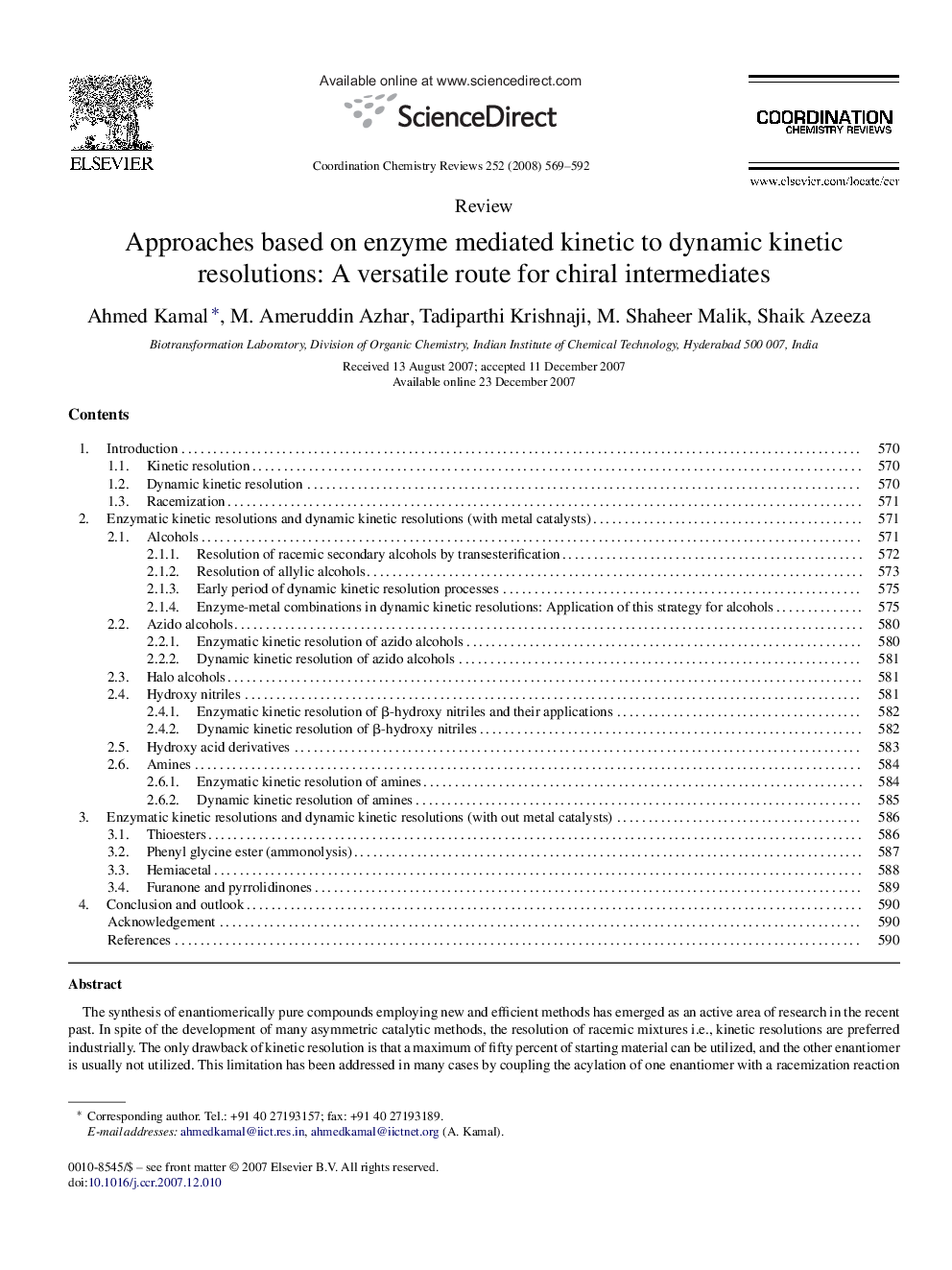| Article ID | Journal | Published Year | Pages | File Type |
|---|---|---|---|---|
| 1299946 | Coordination Chemistry Reviews | 2008 | 24 Pages |
The synthesis of enantiomerically pure compounds employing new and efficient methods has emerged as an active area of research in the recent past. In spite of the development of many asymmetric catalytic methods, the resolution of racemic mixtures i.e., kinetic resolutions are preferred industrially. The only drawback of kinetic resolution is that a maximum of fifty percent of starting material can be utilized, and the other enantiomer is usually not utilized. This limitation has been addressed in many cases by coupling the acylation of one enantiomer with a racemization reaction for the in situ conversion of the undesired enantiomer to the desired products. Therefore a combination of lipases with transition metals or other related racemizing agents resulted in a single enantiomer. This process is termed ‘dynamic kinetic resolution’ and has been a focus of research in recent years towards asymmetric synthesis.This review enlightens the changing trends from kinetic resolution to the development of dynamic kinetic resolution, with an emphasis on the chiral intermediates of biological significance and the type of catalysts used along with the enzymes in such processes.
